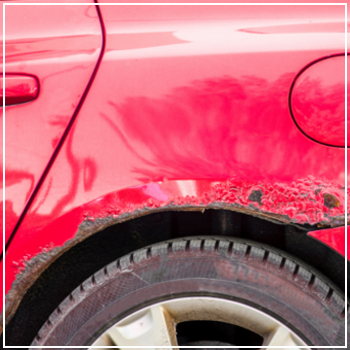Rust is a chemical process called oxidation, which occurs when metal comes into contact with moisture and oxygen. Salt accelerates this reaction, making coastal areas and places with heavy road salting particularly vulnerable. Even small dents or scratches can become entry points for moisture, leading to hidden rust beneath the paint. If left unchecked, it can spread quickly and cause serious structural damage over time. One of the first signs you might notice is bubbling or peeling paint, especially in areas where water tends to collect. It's important to address these issues early before they lead to more expensive repairs. Prevention is always better than cure. Applying a thick layer of wax or using a ceramic coating can create a protective barrier that keeps moisture and contaminants from reaching the metal underneath. For added protection, some people choose to apply a clear wrap to their vehicle’s undercarriage, which can significantly reduce the risk of rust forming. These treatments not only protect against rust but also help keep your car looking newer for longer by preventing things like bird droppings and tree sap from damaging the paint. Winter driving often means salted roads, which can leave corrosive residue on your car. This debris can sit on your vehicle for days, accelerating rust formation. Make sure to wash your car regularly, especially after snow or rain, to remove any harmful substances. If you live near the ocean, even more frequent washing and waxing is recommended. Saltwater and sand can be extremely damaging over time, so staying on top of cleaning is essential. During fall, drain plugs can become clogged with leaves, dirt, and moisture. This buildup can corrode the surrounding area and lead to rust. Check around your car’s body, especially near the doors, hood, and trunk, and clean out any debris you find. A spilled drink might seem harmless at first, but if it gets trapped under the carpet or upholstery, it can lead to mold and rust over time. Always wipe up spills immediately and dry the area thoroughly. If possible, remove the carpet or floor mats and let them air dry outside. If the carpet can't be removed, open the doors and park the car in a well-ventilated area to allow moisture to escape. Regularly check your car for any signs of rust. Look for paint bubbles, flaking, or puffy spots. Pay special attention to areas like wheel wells, fenders, door edges, and under the car. If you have access to tools, removing your tires can give you a better view of hard-to-reach parts. If you live in an area prone to rain, snow, or high humidity, parking your car in a garage can make a big difference. A dry, enclosed space helps prevent moisture from building up and reduces the chances of rust forming. Even if a full garage isn’t available, consider using a car cover or setting up a sheltered area. Taking these steps now can save you from costly repairs later. Don’t wait until rust becomes a major issue. Contact DaSilva’s Auto Body today to schedule a rust inspection or treatment. Our team can help protect your car and keep it looking great for years to come. Reach out to our Naugatuck location to learn more about how we can help you stay ahead of the rust game. round bar, Cold drawn round bar, carbon steel round bar Changzhou Chengxin Metal Products Co., Ltd , https://www.chengxinsteeltube.com Nothing is more frustrating for a car owner than discovering early signs of rust. While weather and aging are natural, seeing rust form within just a few years can be really unsettling. The good news is that many causes of rust can be prevented or minimized with the right care and attention.
Nothing is more frustrating for a car owner than discovering early signs of rust. While weather and aging are natural, seeing rust form within just a few years can be really unsettling. The good news is that many causes of rust can be prevented or minimized with the right care and attention.How Rust Actually Forms
1. Apply Rustproofing Treatments Early
2. Keep Your Car Clean All Year Round
3. Don’t Overlook the Drain Plugs
4. Act Fast on Interior Spills
5. Inspect for Early Signs of Rust
6. Park in a Garage When Possible